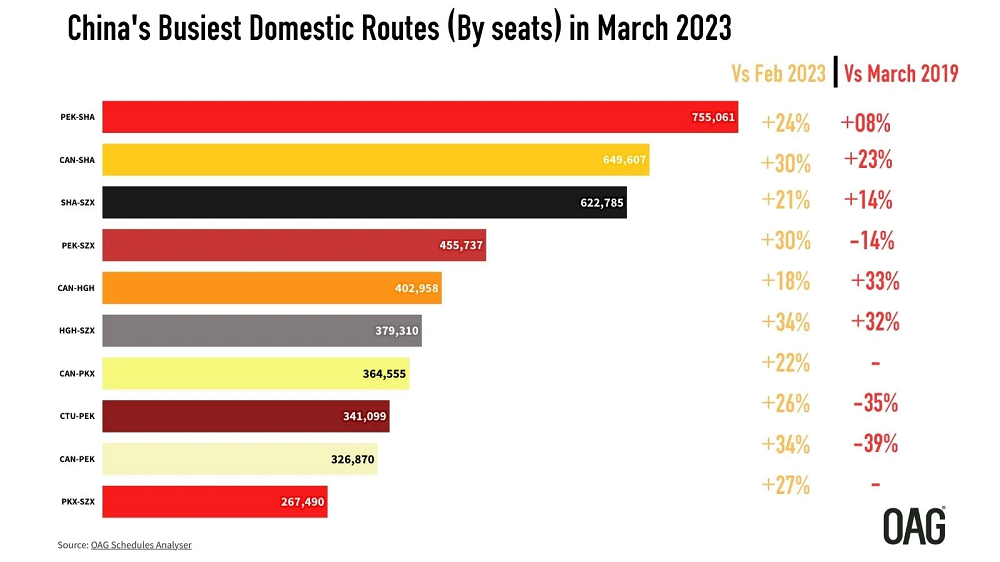
Before the pandemic, air travel passenger numbers were on the rise, meaning busier airports and improved sales figures for travel retail companies. Such was the demand for pre-flight shopping that operators were renovating their airports to provide more retail space.
However, the onset of the global health crisis left airports and their shops largely empty. Although the travel industry is now slowly recovering, it remains volatile and unpredictable – and companies are having to identify, make sense of, and adapt to new airport retail trends. In these uncertain times, the importance of accurate, up-to-date information is greater than ever.
The ebb and flow of demand
A prominent feature of the current travel retail landscape is the constantly changing profile of travellers. Since not every nationality can travel at a given time, retail companies must focus on the ones that can – even if this means targeting a new audience. According to where these audiences are travelling from and to, and when they are travelling, duty-free operators and luxury brands can adjust their in-store offerings to optimise performance.
In addition, while overall passenger numbers are still lower than before the emergence of Covid-19, retailers may benefit from pent-up demand, which points to a surge in travel from a particular market when restrictions are eased.
A notable example of this has seen British tourists flocking to destinations such as the Balearic Islands, Spain. Meanwhile, an increase in luxury travel equates to greater spending power and promises more business for duty-free shops and other travel-dependent stores.
Travellers are also visiting new locations, with a current trend seeing tourists snubbing the city break in favour of a beach getaway. At the same time, airlines hit hard by the pandemic are changing their strategies, operating flights from and to different airports and thereby influencing where the largest sums of money are being spent.
A finger on the pulse
Against a backdrop of uncertainty, travel retail companies require the agility and flexibility to anticipate and respond to changes in the prevailing market conditions.
One metric to which retailers should pay close attention is vaccination levels – both at the point of origin and the destination. Since destinations are more likely to open their doors to double-jabbed tourists and origin countries are less likely to enforce strict quarantine and testing rules to fully inoculated returning travellers, countries with high vaccination rates may represent lucrative markets.
At the same time, destinations progressing well with their vaccine roll-out are better placed to attract international visitors because they can offer a safer environment. These destinations are therefore a good option for duty-free stores and related establishments.
However, vaccination rates only tell part of the story. Although high levels of vaccination have been shown to weaken the link between infection and serious illness and death, the success of vaccine rollouts has not quite proved the silver bullet for reopening travel that many hoped it would. With cases remaining high even in countries at an advanced stage in their roll-out, governments continue to enforce travel restrictions to curb transmission. To know who can travel where and when retailers should keep a close eye on the development of these measures.
Furthermore, travel retail companies would be wise to consider their key audiences’ appetite for foreign holidays even when these markets are not permitted to fly. The previously mentioned pent-up demand, which ForwardKeys’ data shows to be a significant trend, is likely to precede a busy period for outbound travel from the market in question.

Your travel retail toolkit
ForwardKeys’ Traveller Statistics gives travel retailers the tools they need to monitor the rapidly evolving post-Covid travel landscape and anticipate trends for enhanced planning and decision-making. Drawing on ForwardKeys’ comprehensive Total Air Market and Seat Capacity datasets, the powerful, easy-to-use tool covers over 4,000 airports and has numerous filter options, meaning users can home in on the passengers that matter to them.
Furthermore, the platform is divided into four modules – Executive Summaries, Advanced Analysis, Seat and route capacity, and Forecasting – each comprising several sections to further facilitate targeted analysis.
The first module, Executive Summaries, provides top-level statistics on airports and nationalities, with data on the number of arriving and departing passengers by airport and nationality, including a percentage indicating how these figures have changed compared to the same period in the previous year. This allows users to gauge the recovery of major airports and important travel audiences.
The Advanced Analysis goes a step further, enabling the user to ‘drill down’ into passenger statistics to gain insight on arrivals and departures at the terminal level as well as nationalities by origin city. In addition, the ‘Daily and hourly analysis’ section reveals passenger numbers by day of the week and hour of the day so that users know exactly when airports are busiest with relevant travellers. With this level of detail at their fingertips, retailers can optimise staffing, samples, and product selection and placement to reach their main audiences at peak times and consequently boost sales.
Seat and route capacity, meanwhile, illustrates the total number of seats available on scheduled flights worldwide. Users can analyse both departures and destinations, with granularity ranging from the region, subregion, and country to the airport and airport terminal. This allows duty-free operators and brands to compare global airports and terminals – in terms of the number of relevant passengers potentially passing through them – when deciding where to allocate more staff or sell products.
Finally, the Forecasting module offers short- and long-term forecasts charting the evolution of the travel market – in terms of passengers travelling – up to 12 months and 10 years ahead, respectively. The module includes rankings that compare projected year-on-year growth for nationalities, departure airports and terminals, destination countries, and airlines. Backed by complex data science, it provides a reliable foundation on which to base long-term decisions, such as where to open new stores or expand existing ones, while frequent updates for the first three months inform users of the short-term impact of events on their business performance.
Rising to the challenge
In what is a difficult period for any company involved in the travel industry, duty-free operators need to adopt a proactive and agile approach. Paying close attention to prevailing market conditions is crucial in this regard: retailers must know who can travel where and when – according to connectivity, vaccination rates, and government-enforced restrictions, for example.
Moreover, organisations require in-depth data from airports and terminals, with insight on which nationalities and profiles are most likely to visit their duty-free stores and when alongside an ability to predict travel growth. By combining a broad knowledge of market health with more targeted analysis, travel retailers can minimise the impact of travel disruption on their business and maximise success.
To learn more about the data behind this article and what ForwardKeys has to offer, visit http://forwardkeys.com.







Sign up to receive our stories in your inbox.
Data is changing the speed of business. Investors, Corporations, and Governments are buying new, differentiated data to gain visibility make better decisions. Don't fall behind. Let us help.













Sign up to receive our stories in your inbox.
Data is changing the speed of business. Investors, Corporations, and Governments are buying new, differentiated data to gain visibility make better decisions. Don't fall behind. Let us help.





